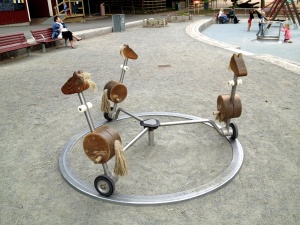In 2025, what will we remember from the last few weeks of the Oklahoma Capitol’s second regular session of the 55th Legislature? Will we remember how state leaders scraped together enough Band-Aids to cover our state’s $1.3 billion deficit? Or will we recall the Capitol press conference in which Pat Potts and a team of “unlikely partners” unveiled their ambitious early education plan?
On May 10, the CEO of the Potts Family Foundation unveiled 25 By 25, the Oklahoma Early Childhood Coalition 2016 to 2025. The purpose is to assemble a coalition of 25 or more private, public and nonprofit organizations to promote investment in proven early childhood programs.
The prime goal is moving Oklahoma into the top-25 states in terms of “every significant indicator of child development.” CEO Potts noted that the coalition had already exceeded the first two targets: more than 25 allied organizations and more than 25 legislators have joined the campaign. Moreover, as Tim Willert reported in The Oklahoman, more than 60 civic and business professionals have signed on.
The coalition is referred to as one that brings together “unlikely partners,” and it does so, in part, by showing how investing in our youngest children benefits all aspects of our economy and society. Nobel Prize-winner James Heckman (who attended the old Harding High School) estimated that every dollar devoted to high-quality early childhood programs produces a $7 to $10 return on investment.
And there could be a bonus: The process of bringing diverse organizations together to serve our kids could help create the civility and the collaboration Oklahoma’s public education system needs today.
Research supports coalition’s efforts
Hearing the 25 By 25 presentation from the perspective of an inner-city teacher, I’m impressed with the knowledge of science and cognitive development shown by the Potts Foundation and the coalition. If I were to suggest just two sources from the huge body of education research that supports their early childhood effort, it would be the real-world work of Gordon MacInnes and the academic analysis of David Kirp.
RELATED
OKC Chamber rep: Don’t ‘unravel’ universal pre-k by William W. Savage III
MacInnes spearheaded the New Jersey Abbott v. Burke case, which created an incomparable test case documenting the ways in which early education creates the best path toward success in school. Owing to Abbott, high-poverty New Jersey schools received an additional $3,000 per student, per year. The systems that invested in the standard school-reform model — emphasizing improved instruction, leadership, data, and accountability — showed little improvement. Meanwhile, those that embraced high-quality early childhood programs saw “virtually unprecedented” gains.
In Fire. Aim. Ready. Why Reformers Miss the Target, MacInnes drew upon cognitive and education research to explain:
We have a lot of evidence about what works best. Start early. Give three- and four-year-old children from poor families two years of high-quality preschool. Follow this with a course of intensive early literacy instruction in grades K-3. A kid who does not read at grade level in third grade has only a one in seven chance of ever reading at grade level! Strong readers can be educated; non-readers cannot.
Berkeley’s David Kirp dug deep into how and why early education worked in Union City, N.J. Kirp explained in Improbable Scholars that Union City used those research-based, early education reforms to turn around a school system that had been one of New Jersey’s worst. Kirp also showed how we can build great schools on the strengths of our democracy. Their successes did not come from outside technocrats, but from a local culture of “abrazos,” or caring. Kirp shows that school improvement must come from trusting relationships. The secret sauce of Union City’s success was “respecto,” or respect.
Teamwork required for success
I would also offer a heads-up in regard to the teamwork that is required to improve early childhood outcomes. The contemporary school-reform movement focused on the role of teachers, curriculum and accountability because that approach was easier than teaching children to read for comprehension by third grade. The instruction-driven reforms of the last generation were way too simplistic, but they were seen as being easier to implement than investing in children’s socio-emotional welfare.
High-quality early education makes much more sense, but it is “rocket science.” For instance, Union City embedded pre-K teachers in elementary schools in order to create a seamless web of cognitive and socio-emotional sharing. And Gordon MacInnes reminds us, early education can’t just be seen as “high-dollar day care.”
To be successful, the full diversity of Oklahomans must come together in a respectful and collaborative campaign to create the seamless web of early childhood programs that our kids deserve.
More on early childhood education:


















